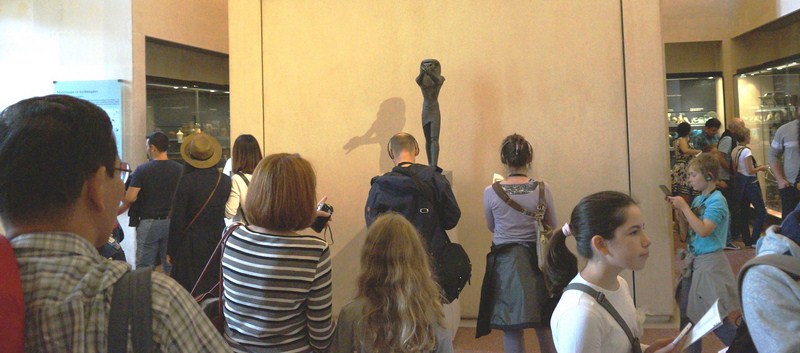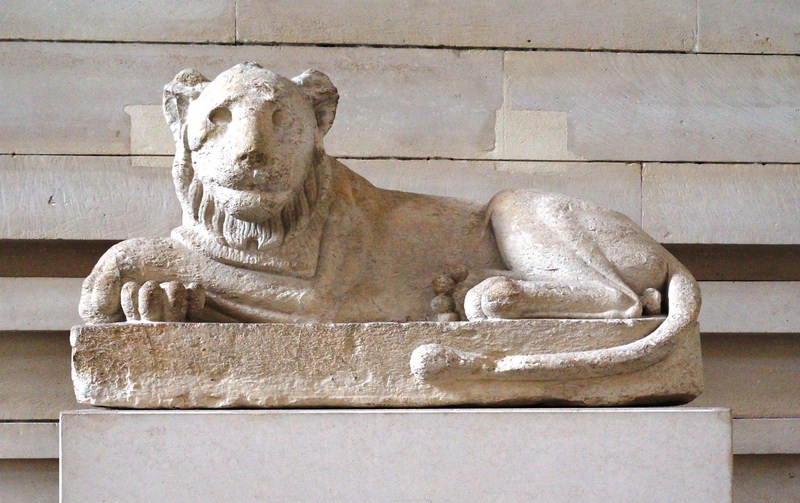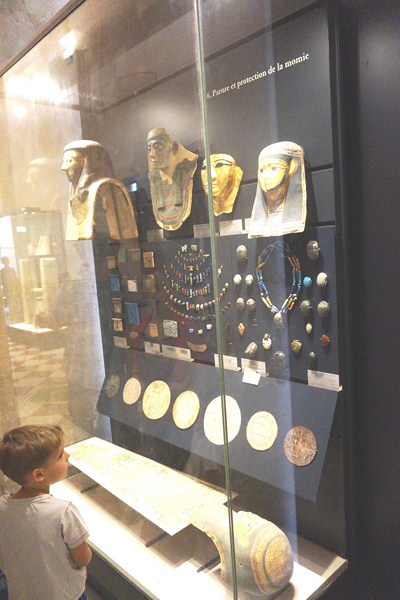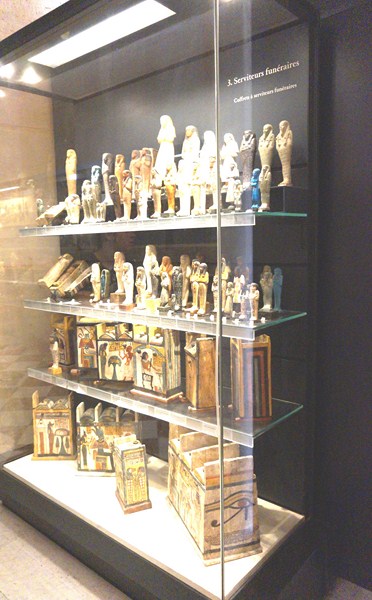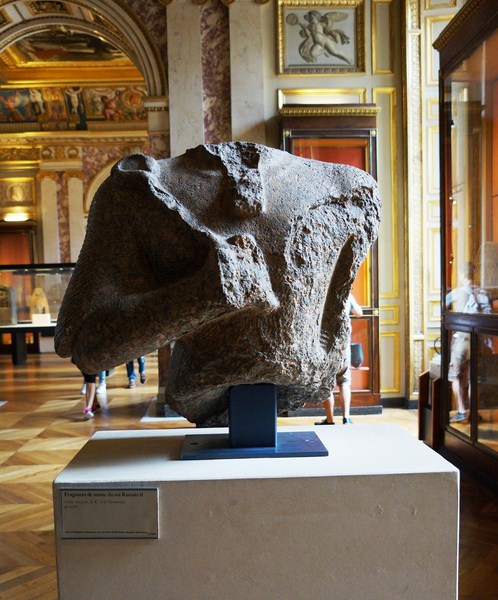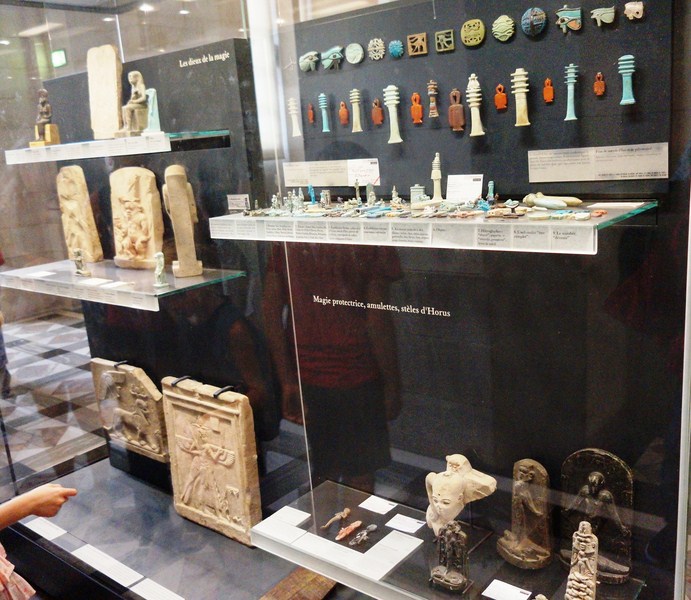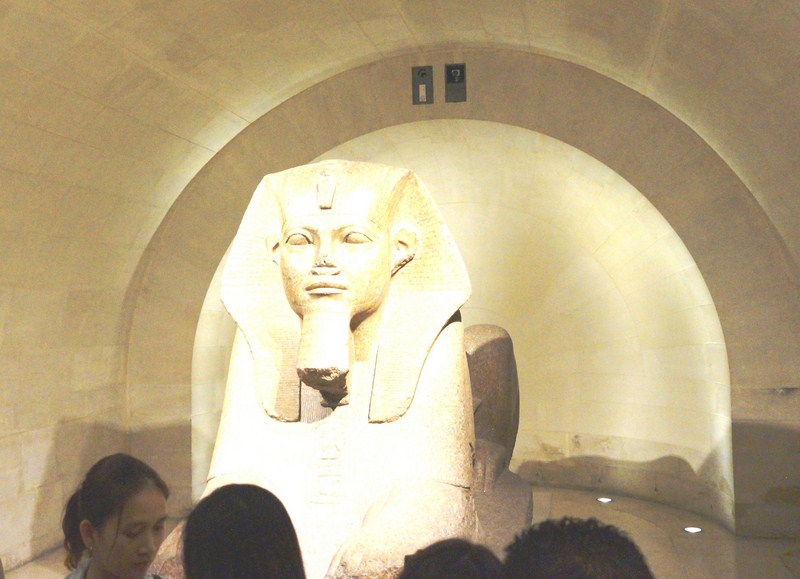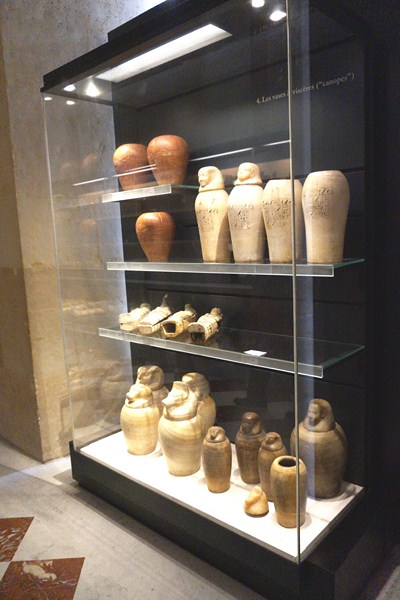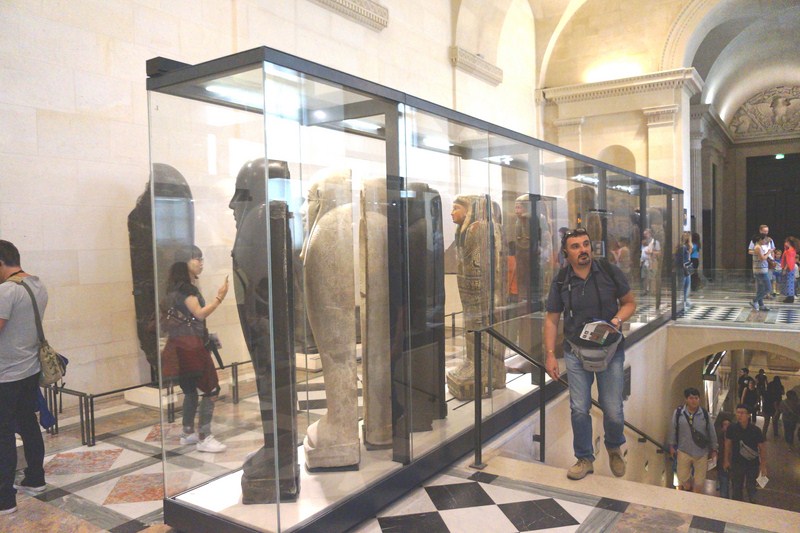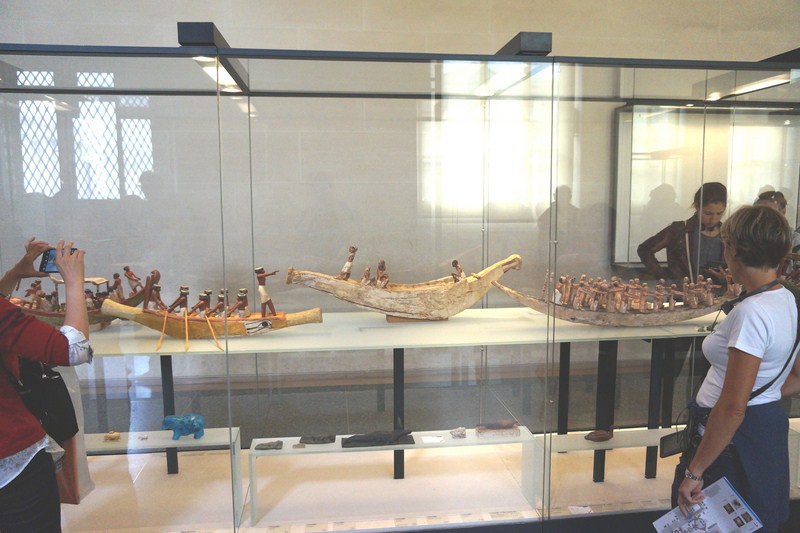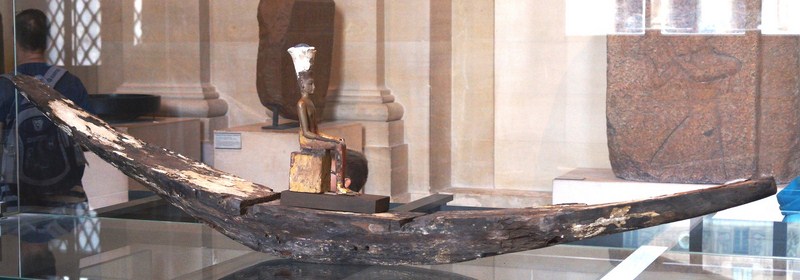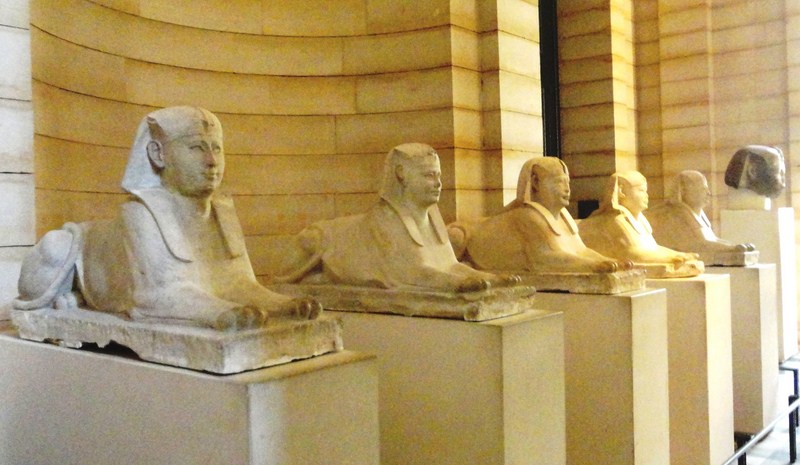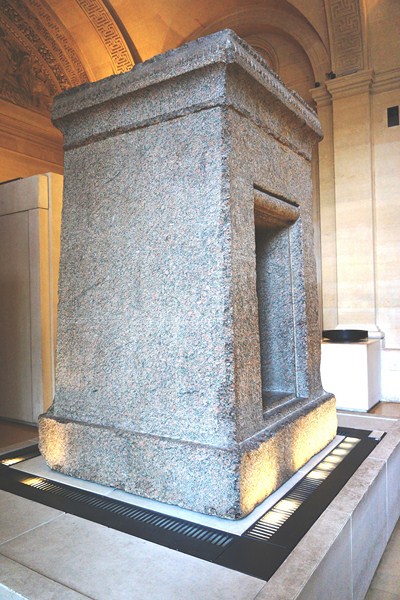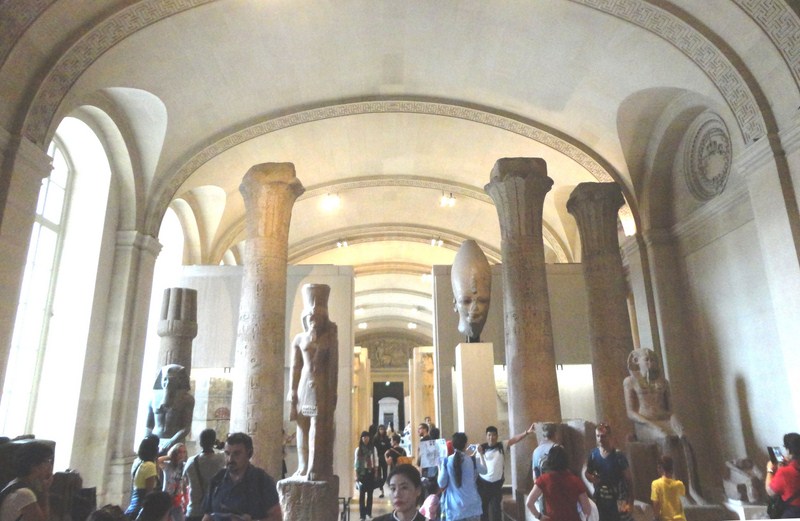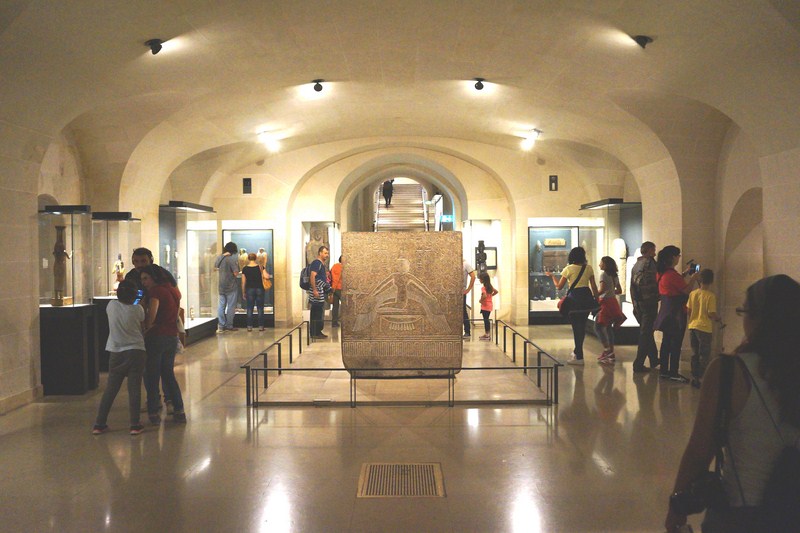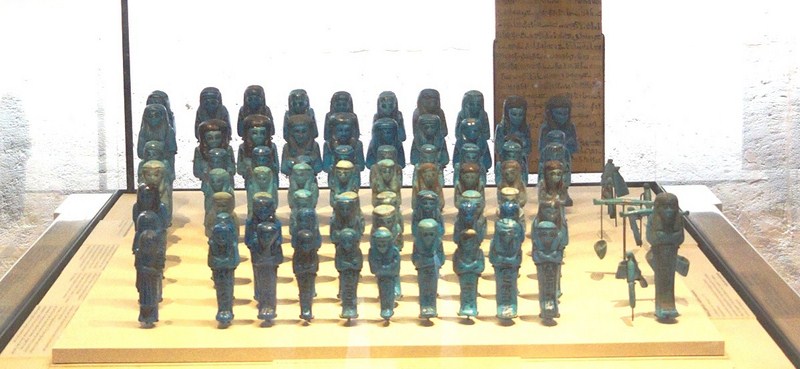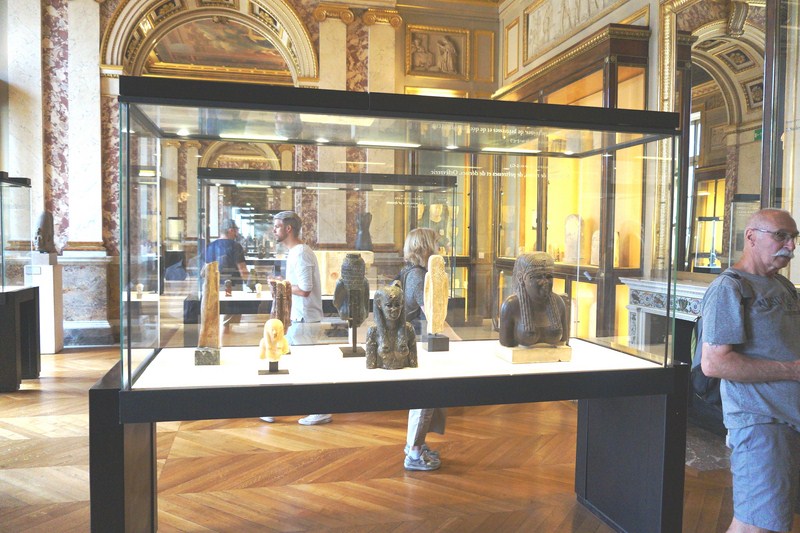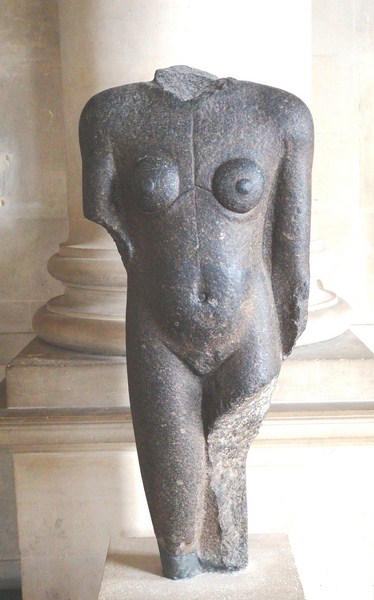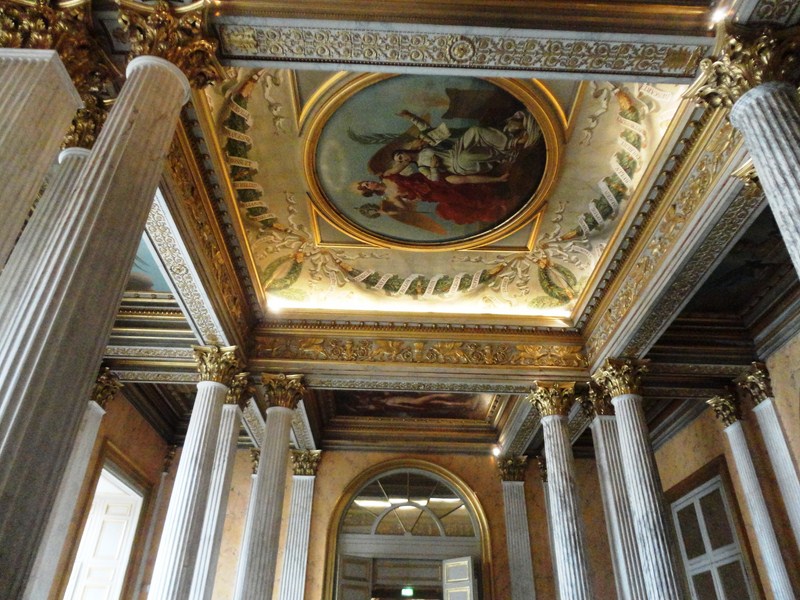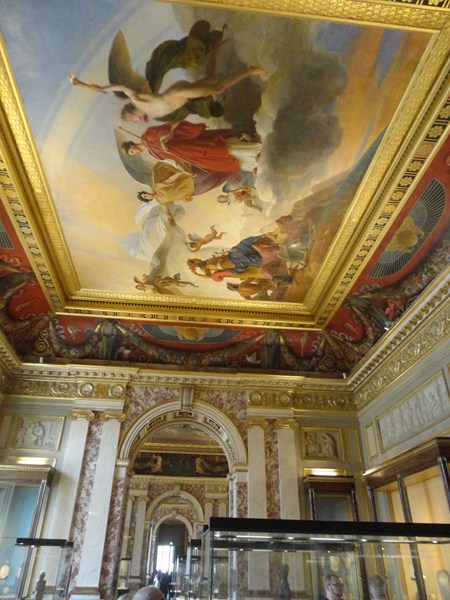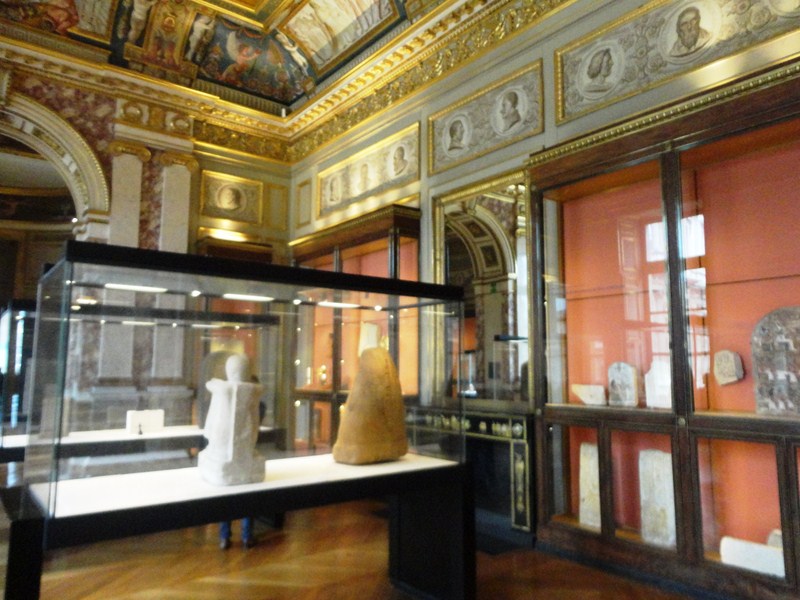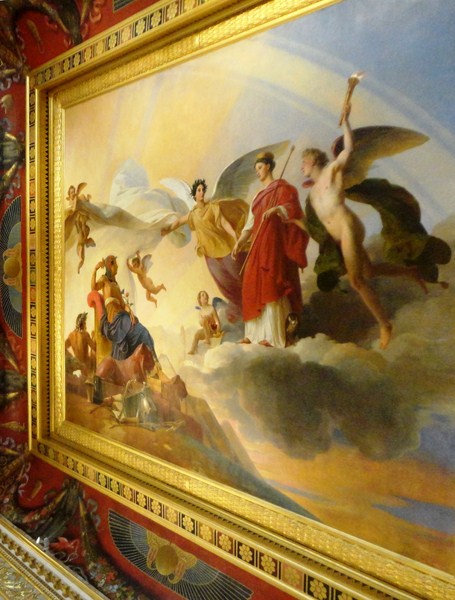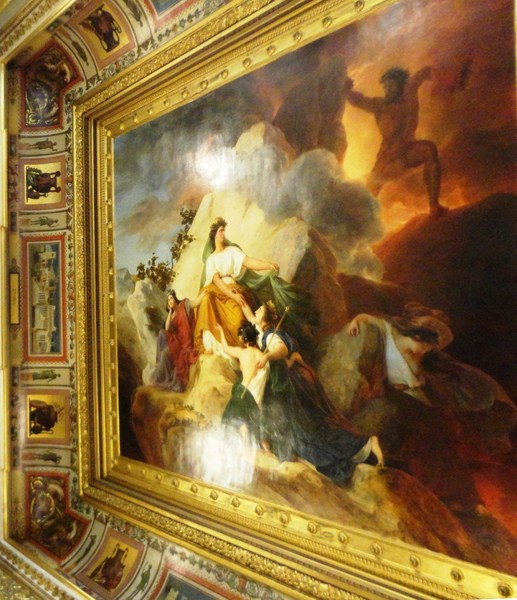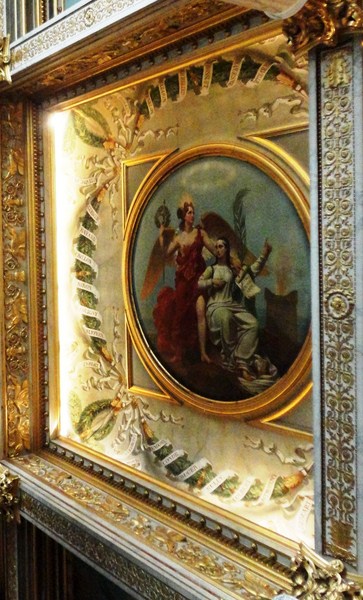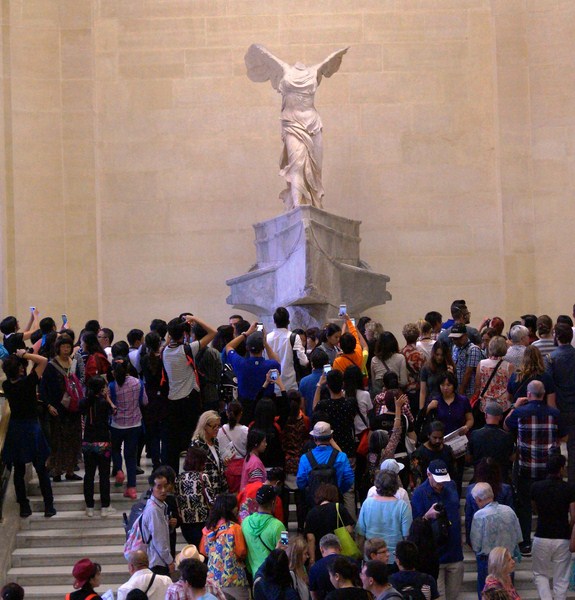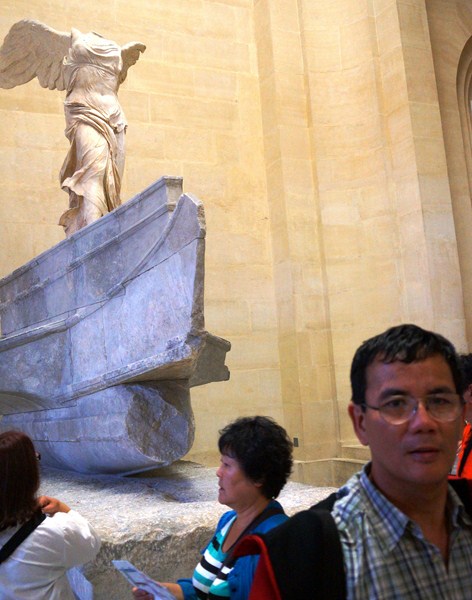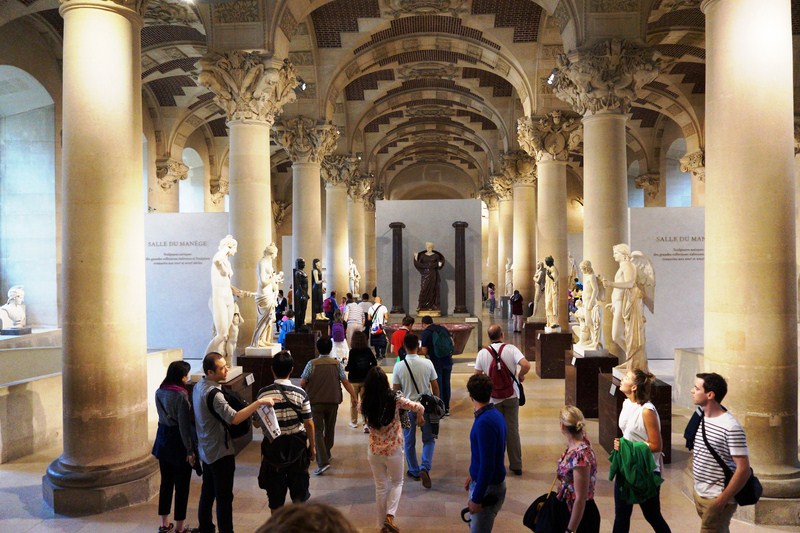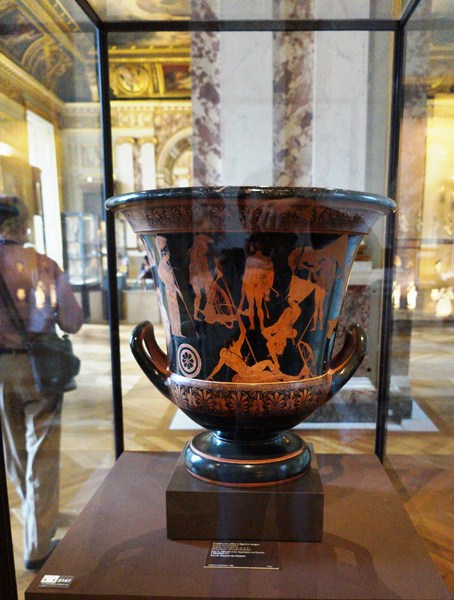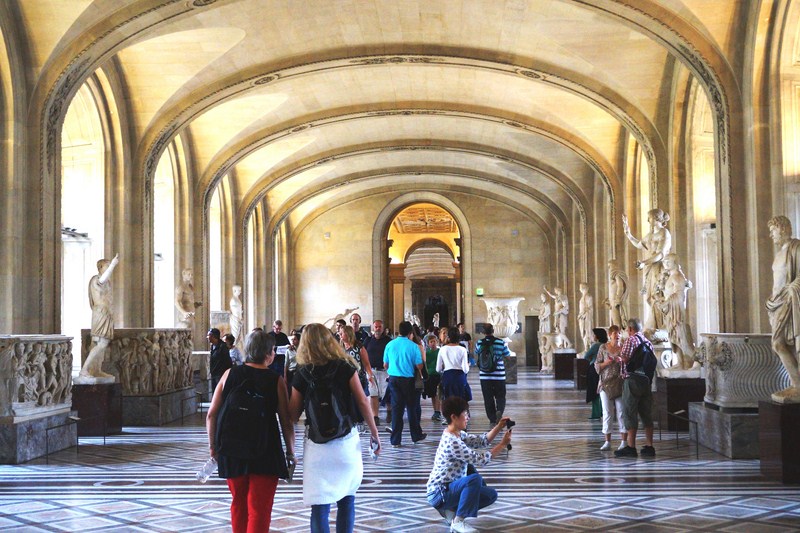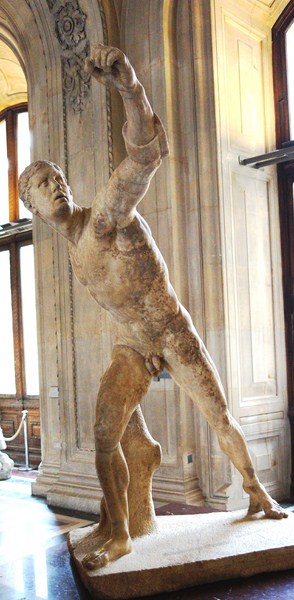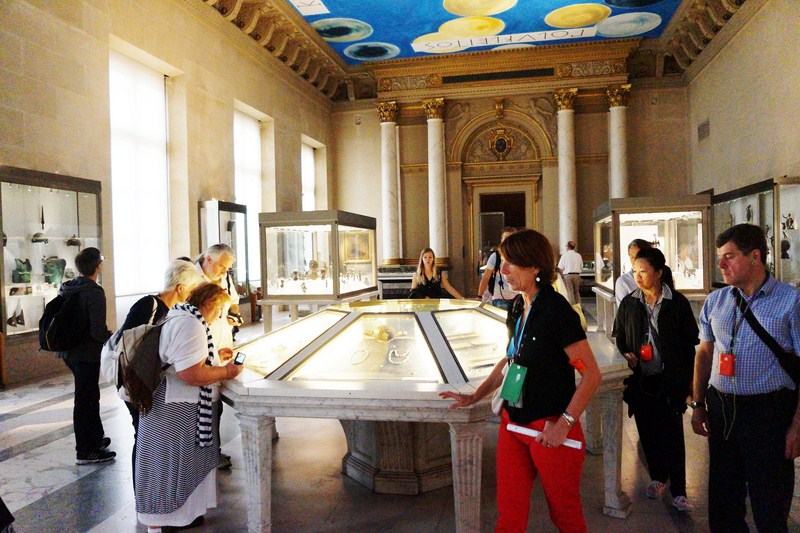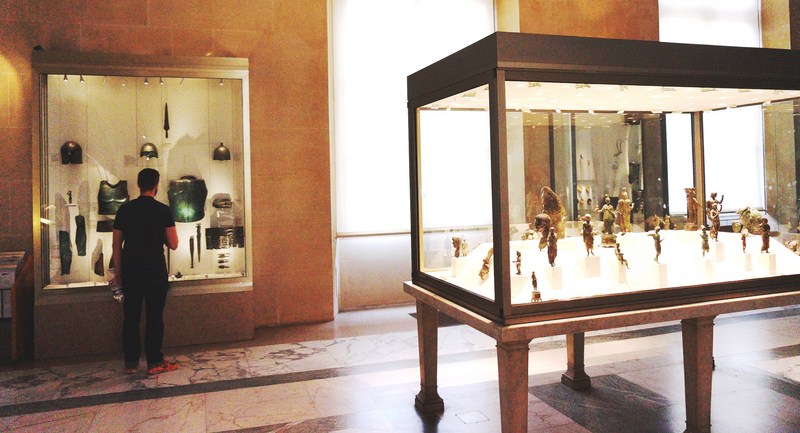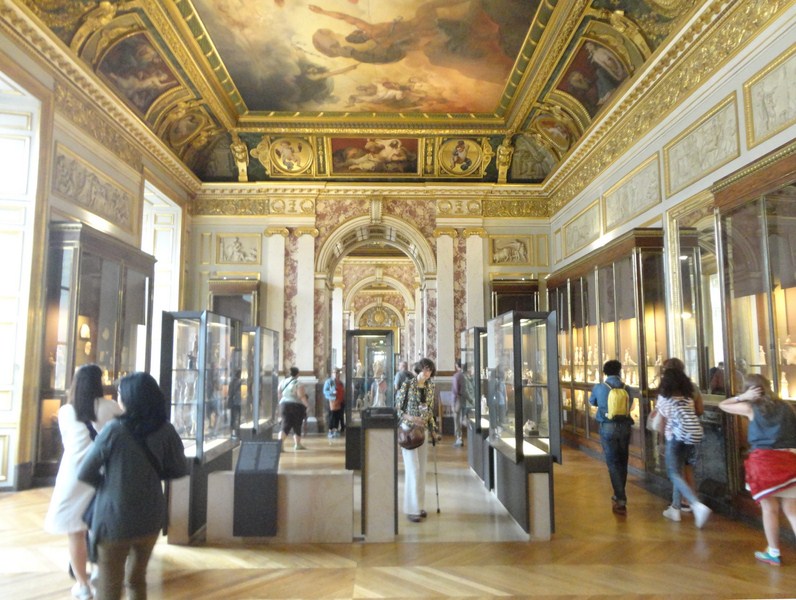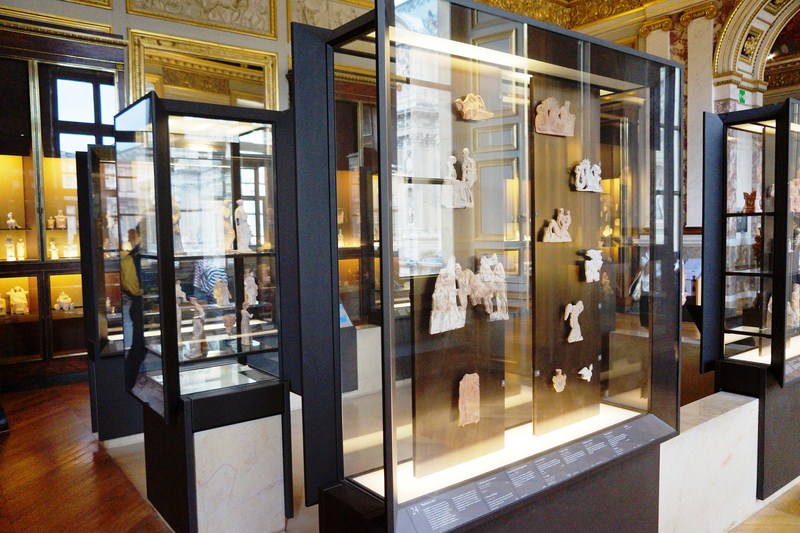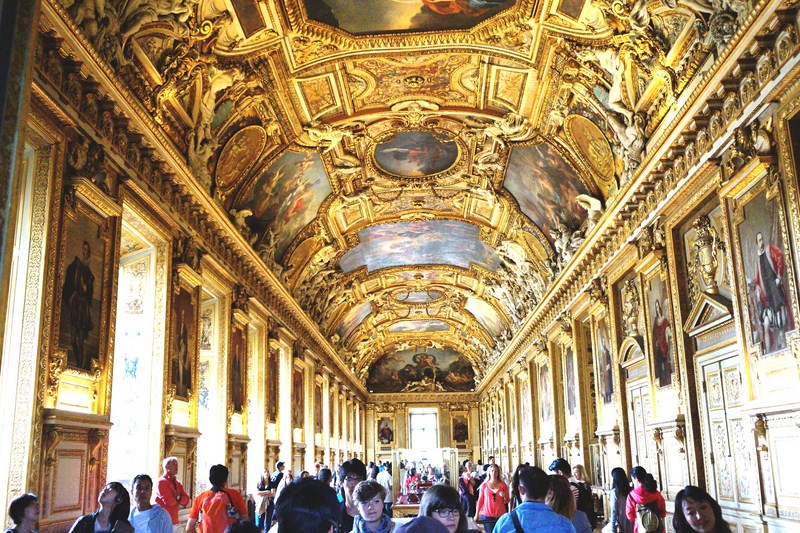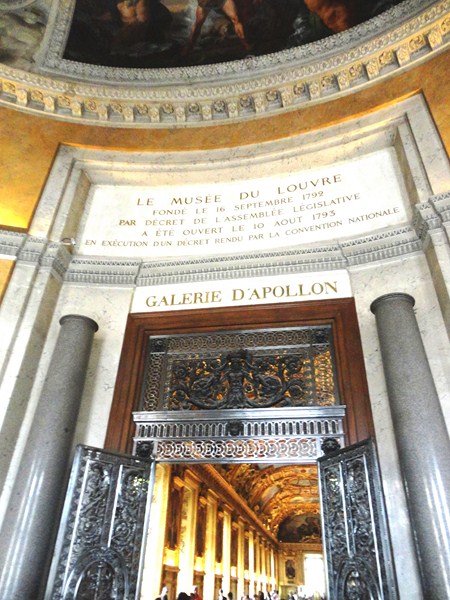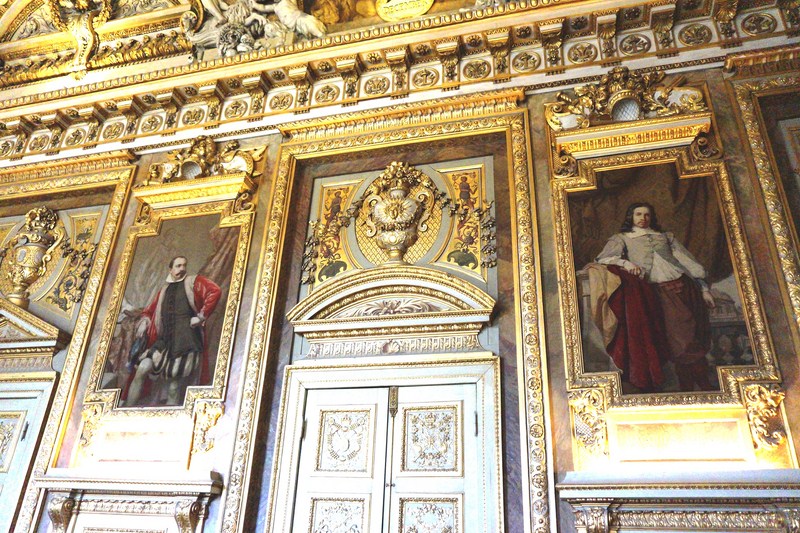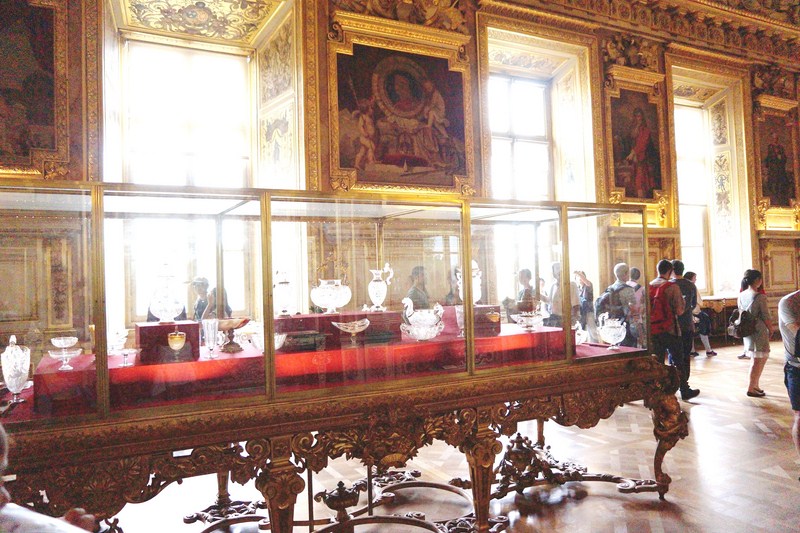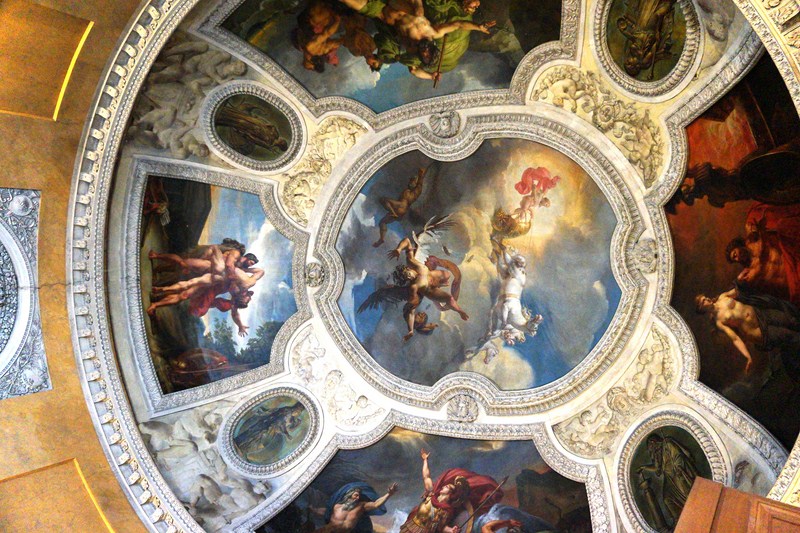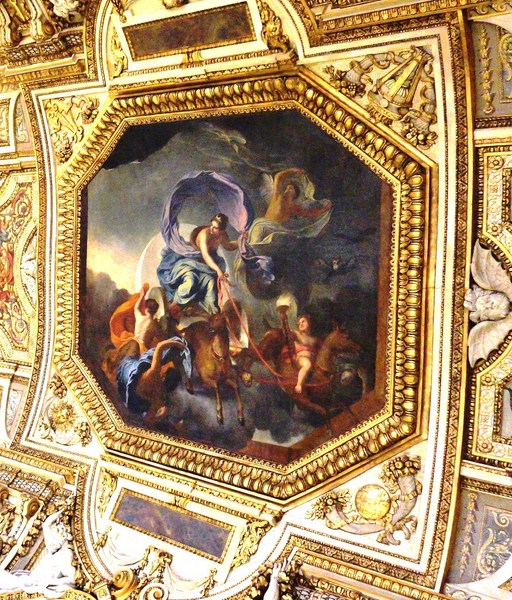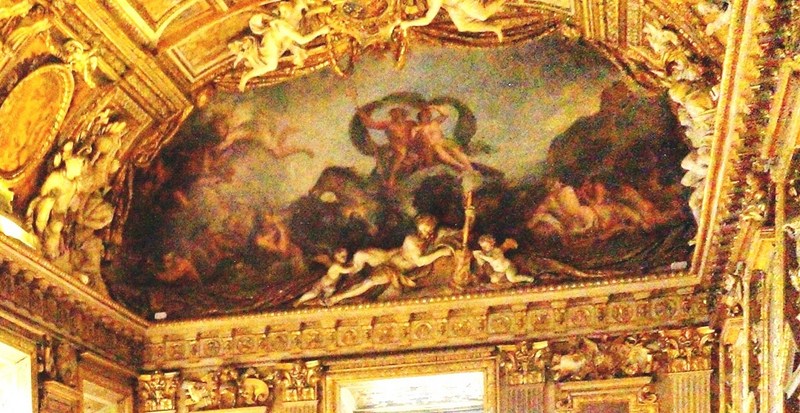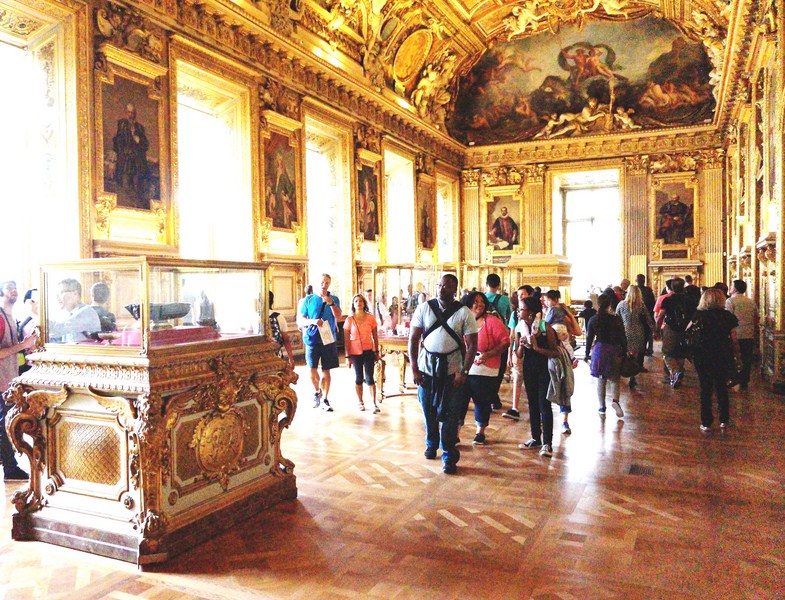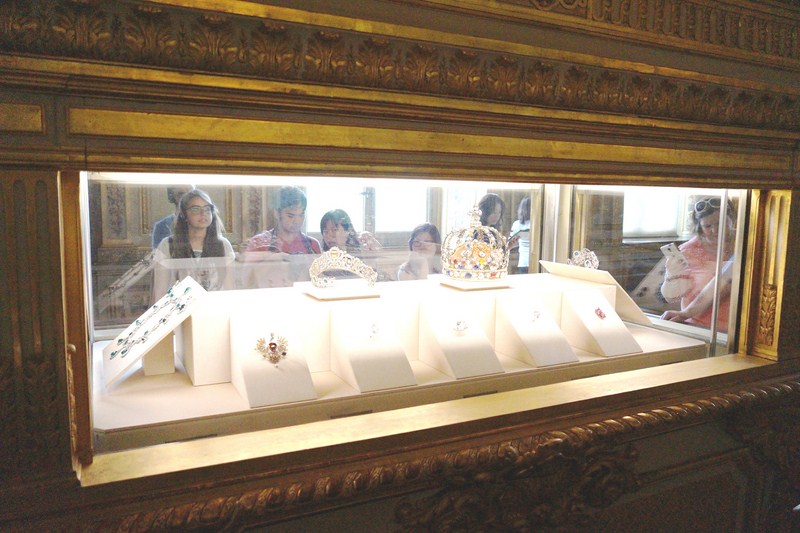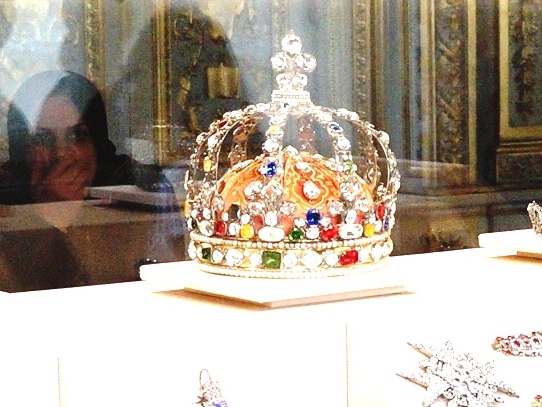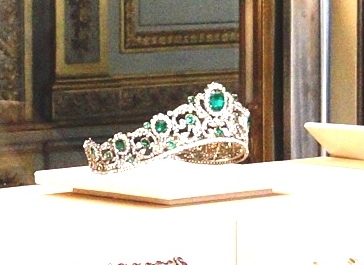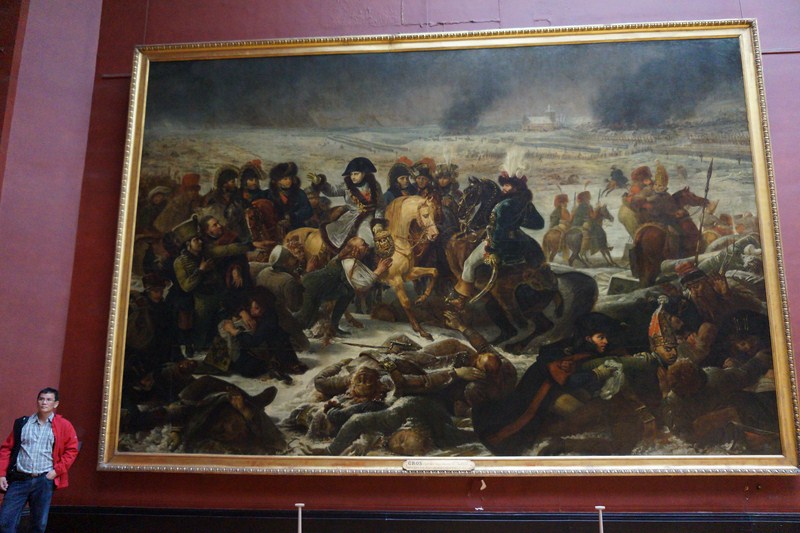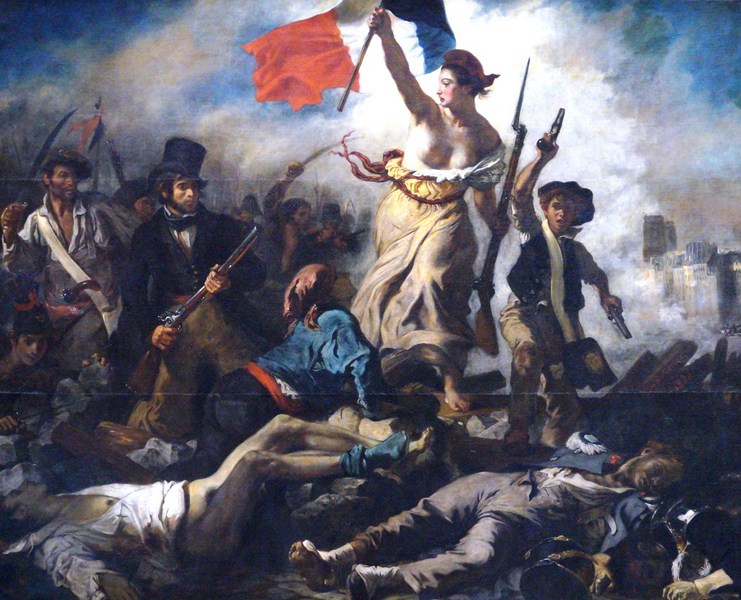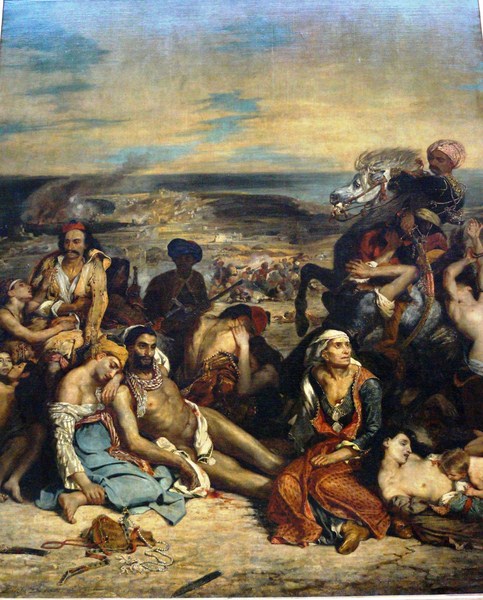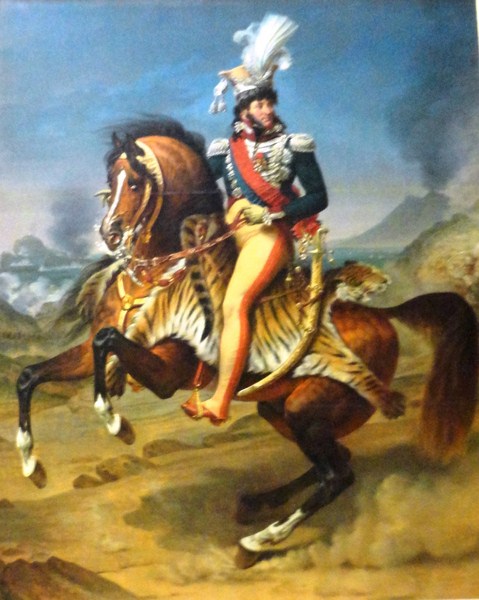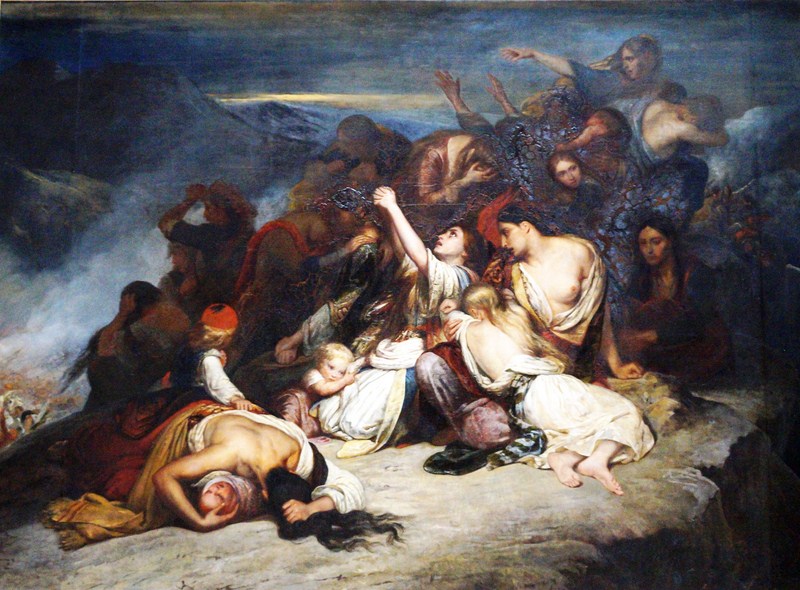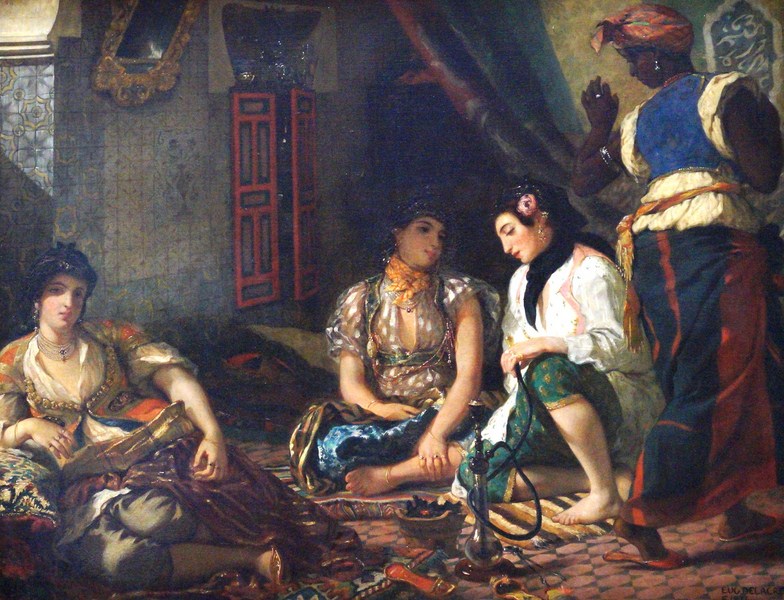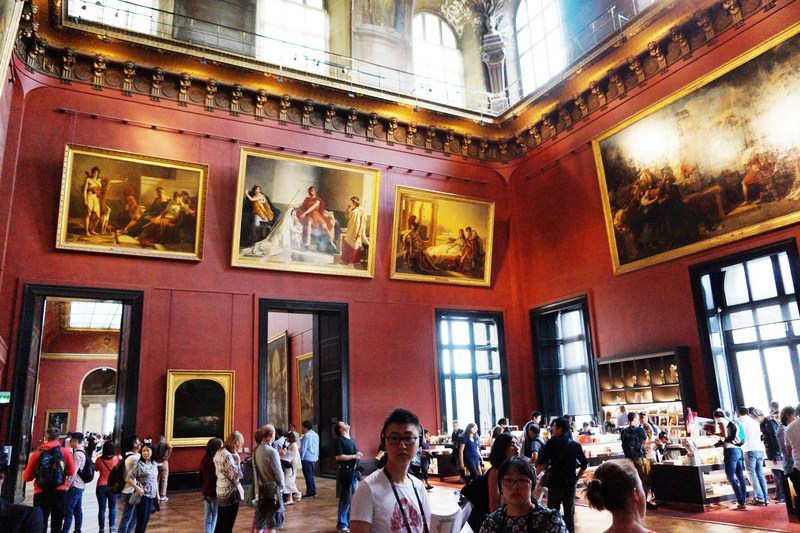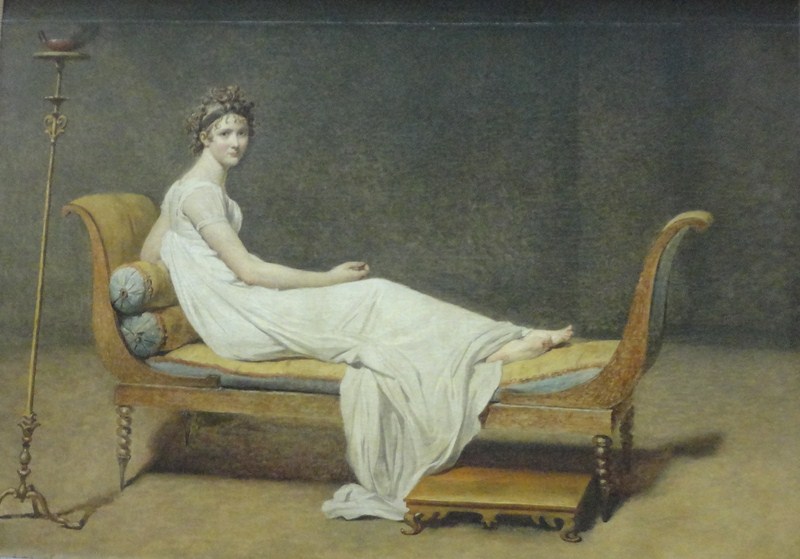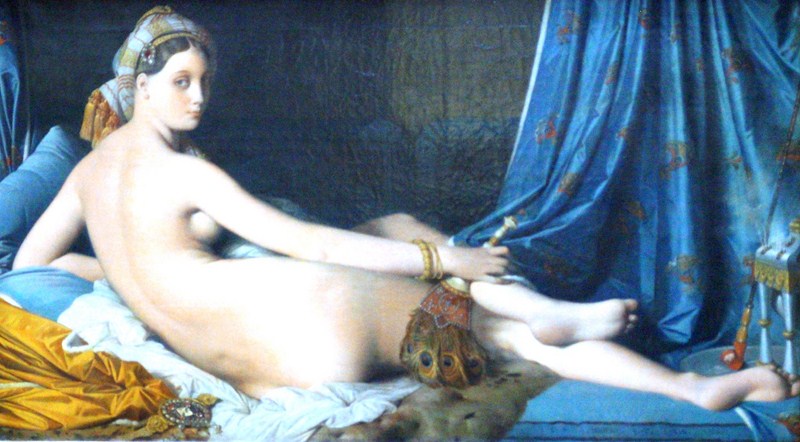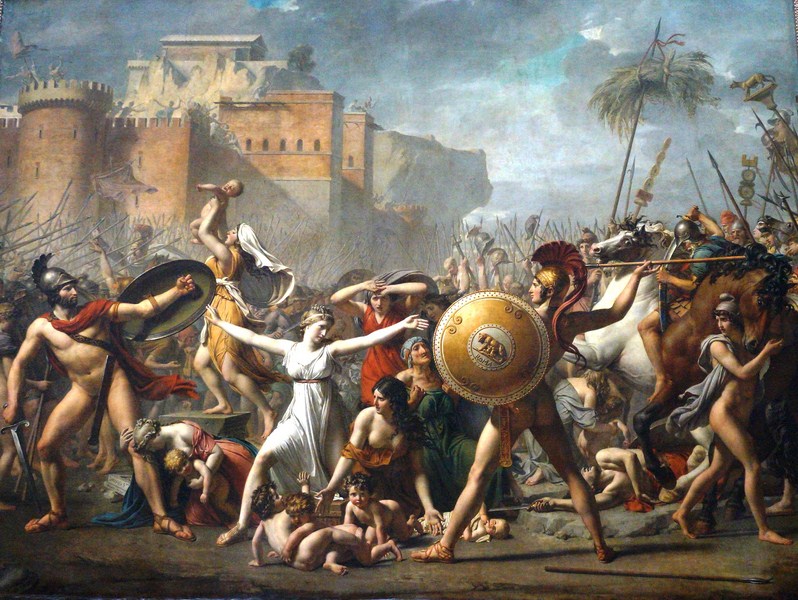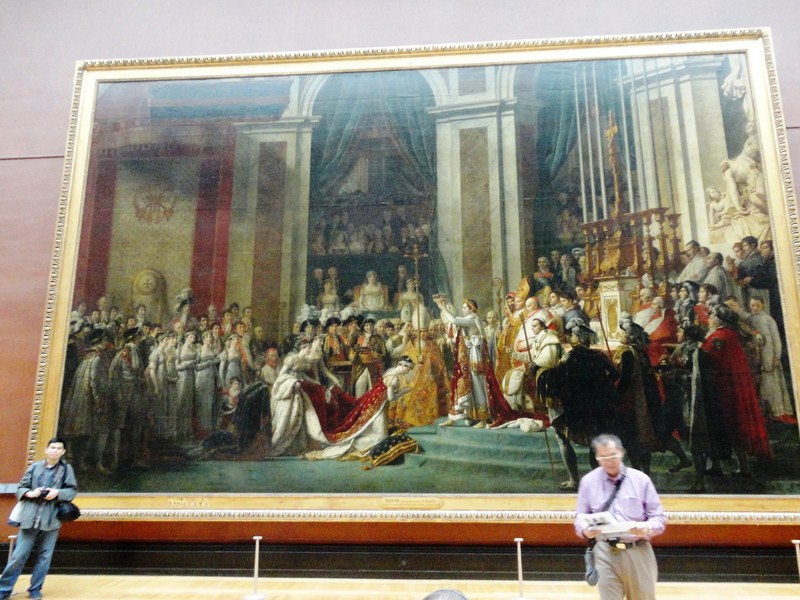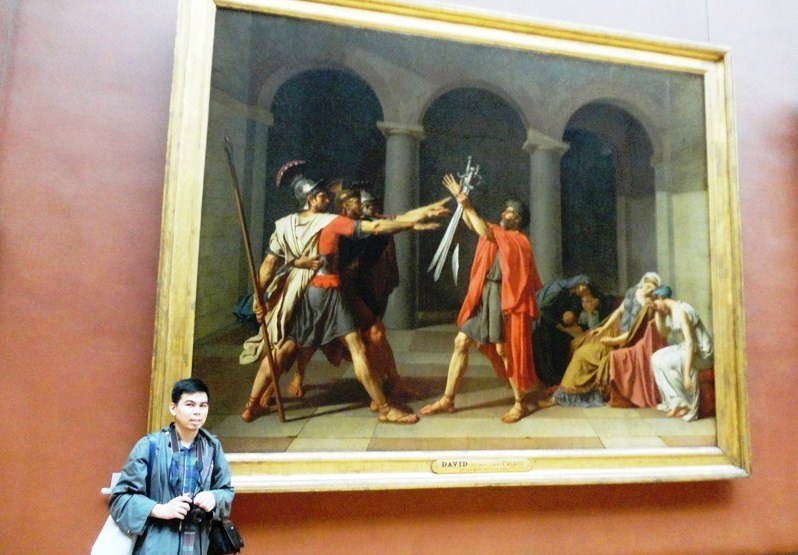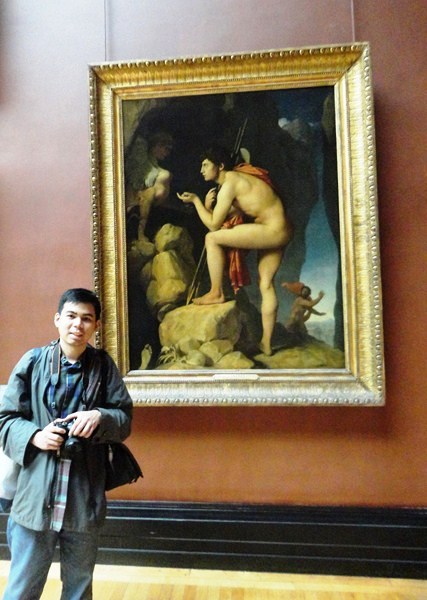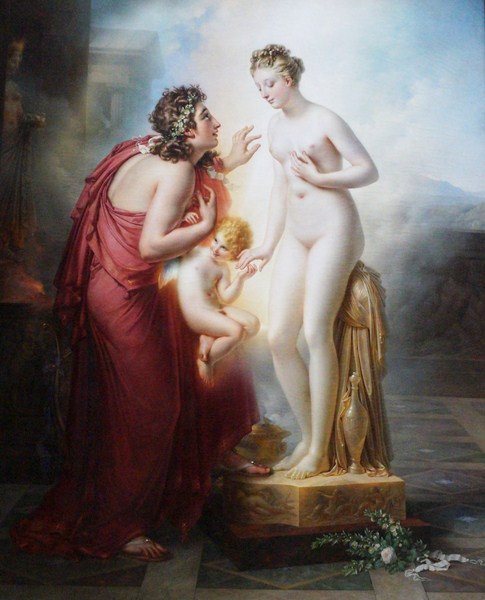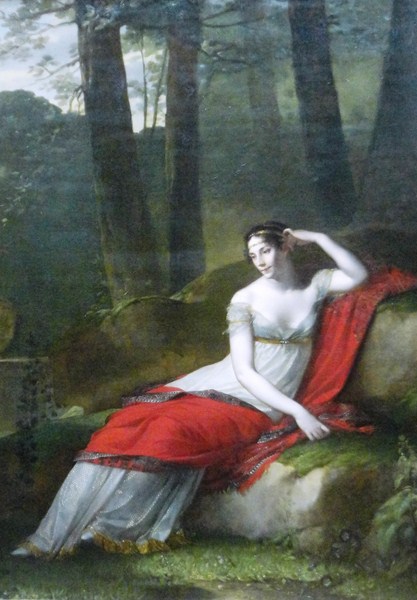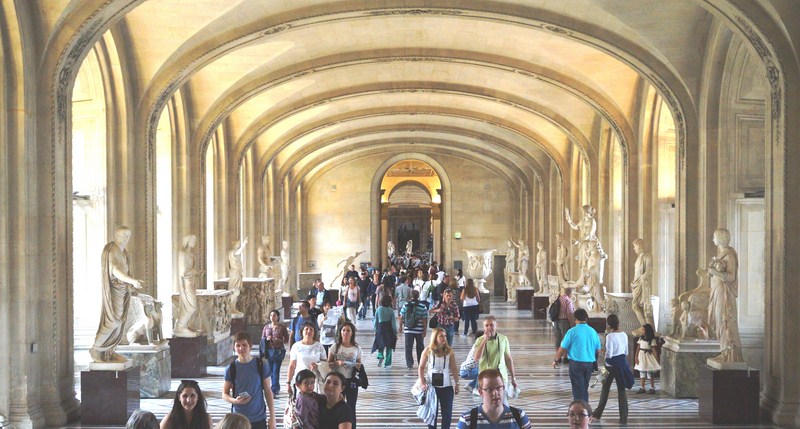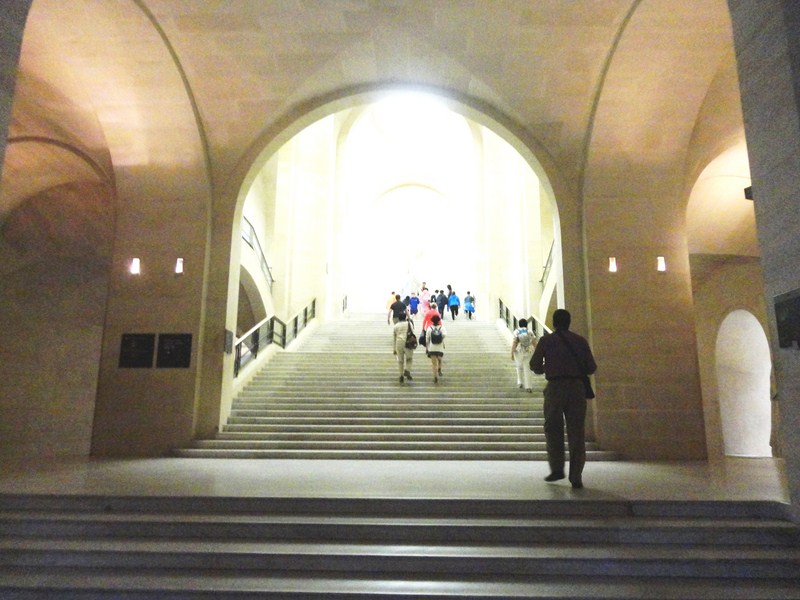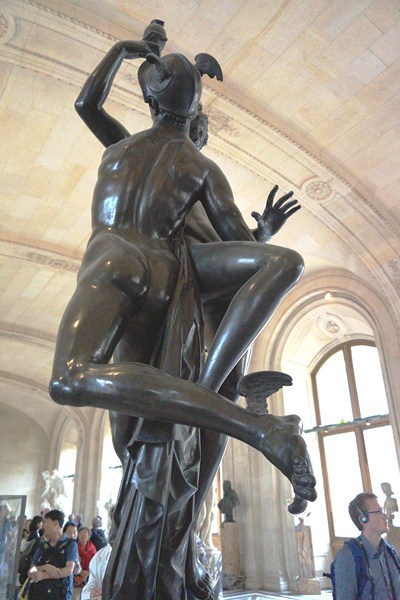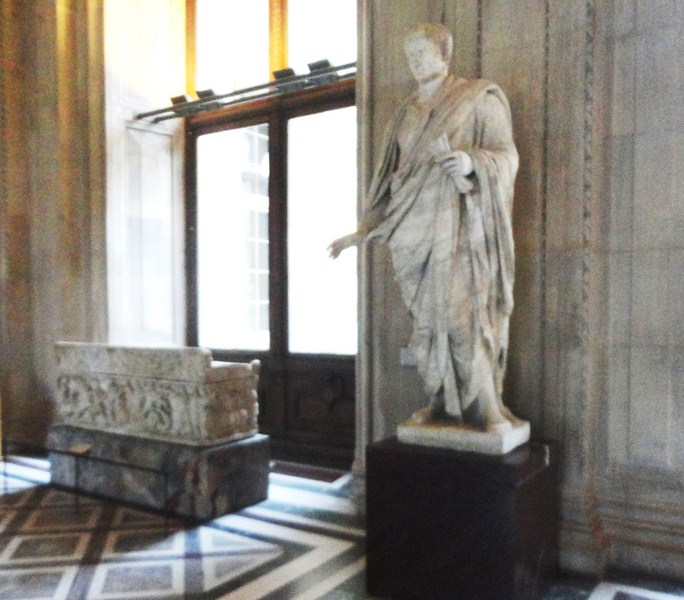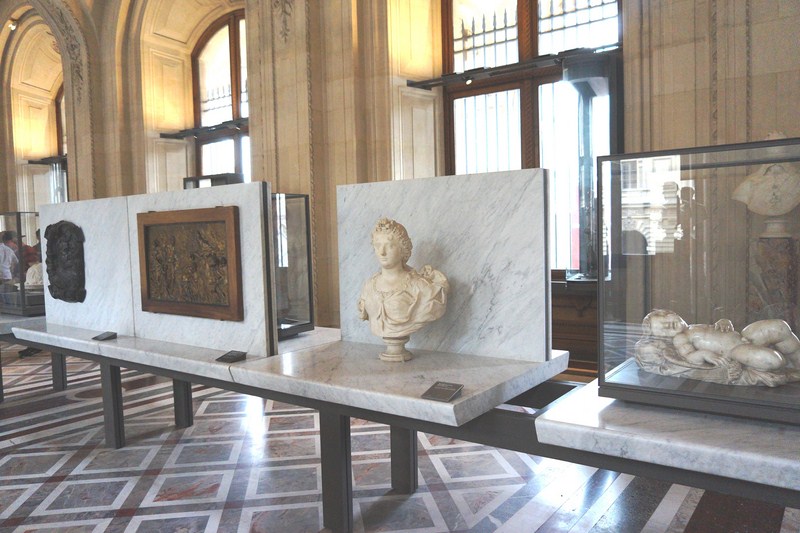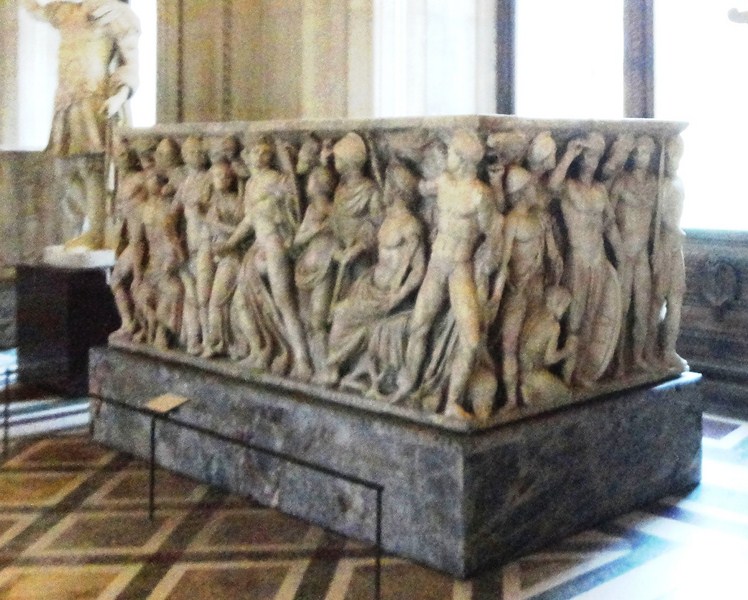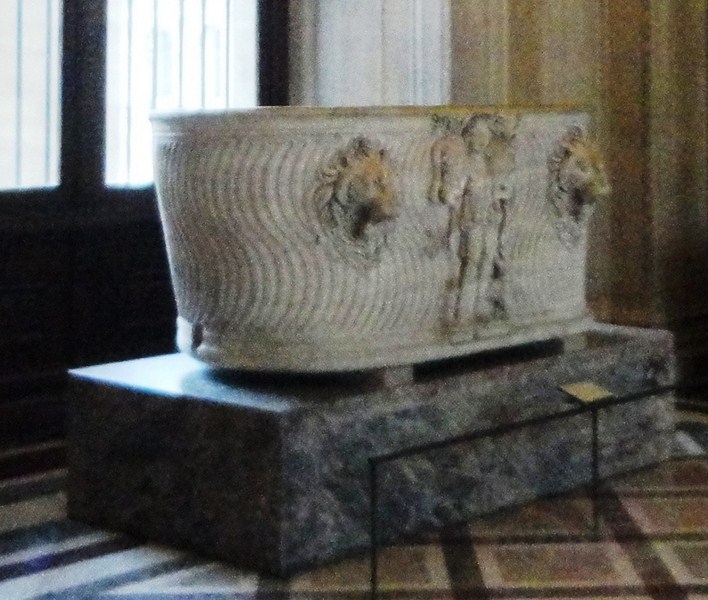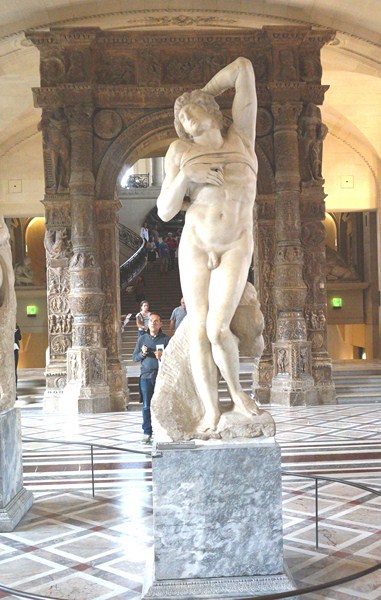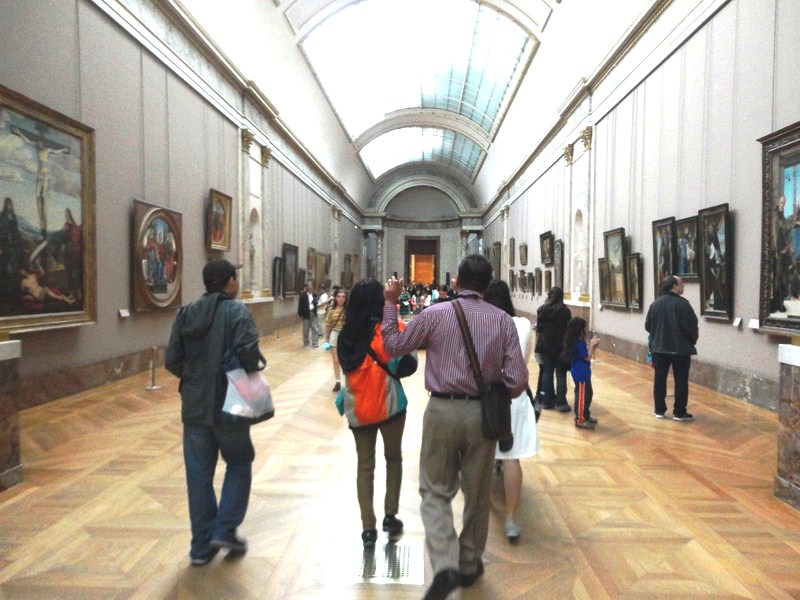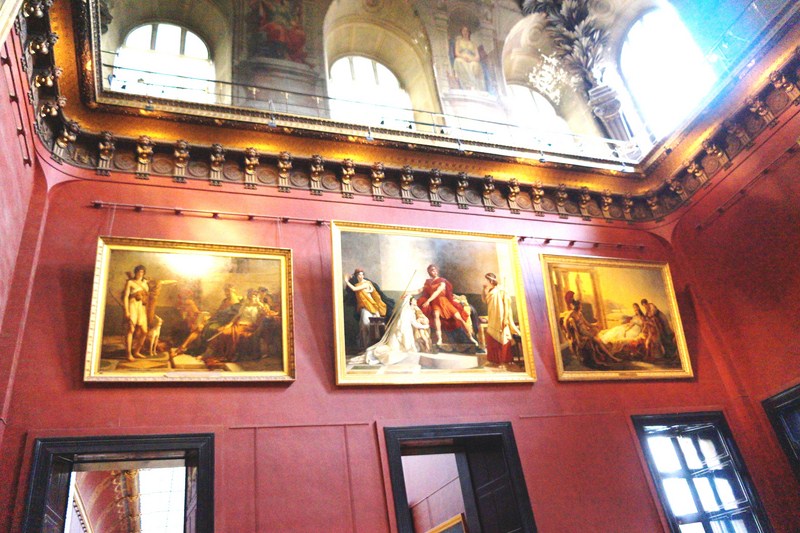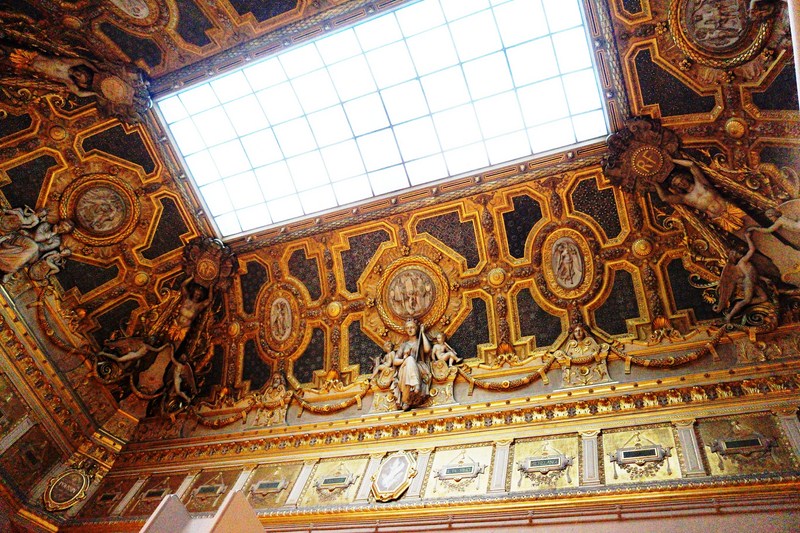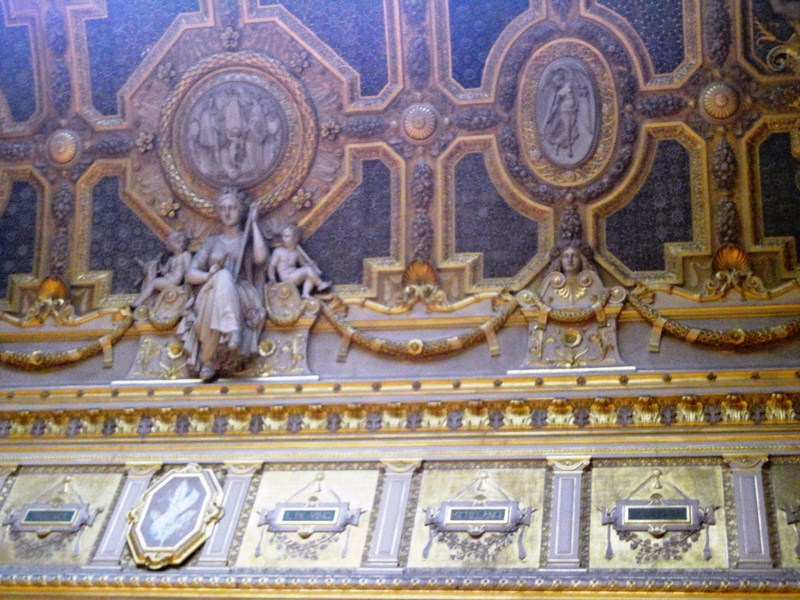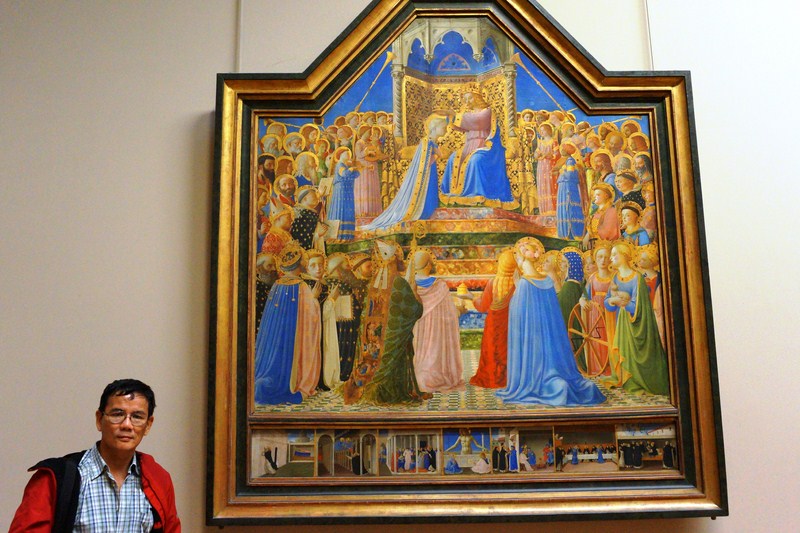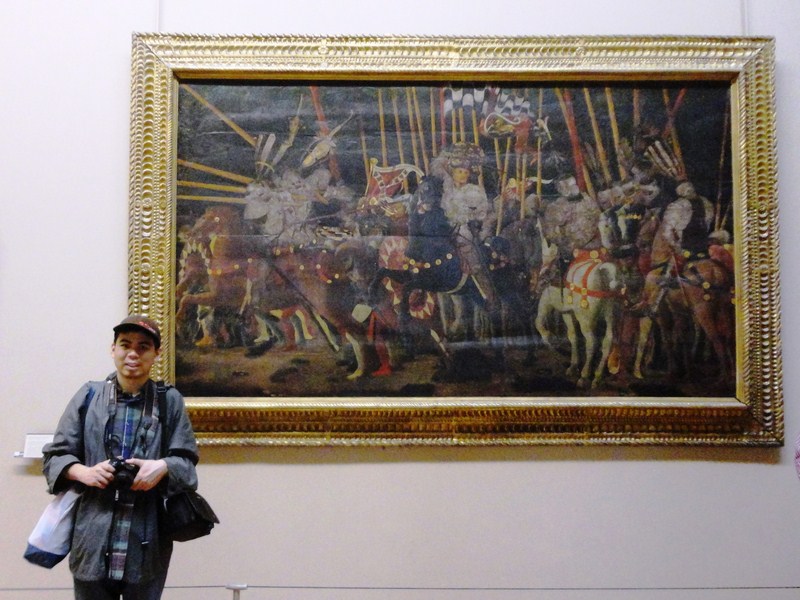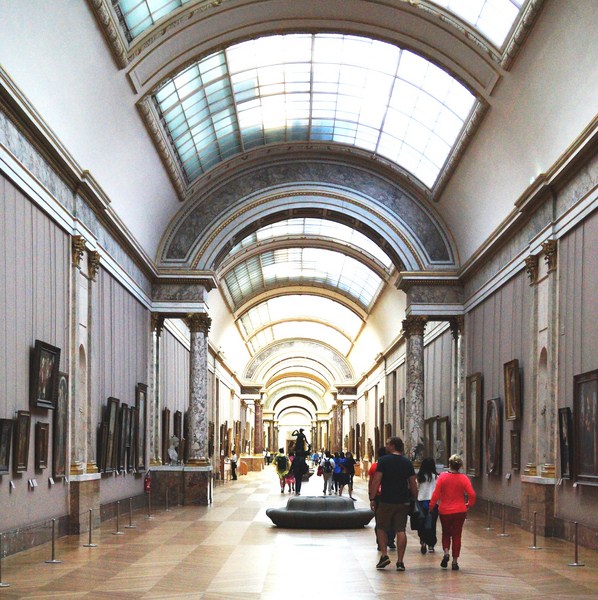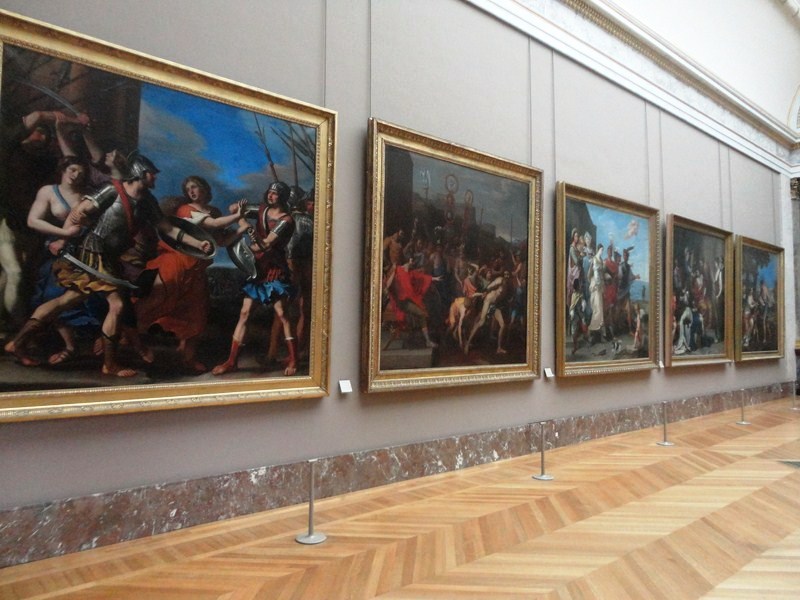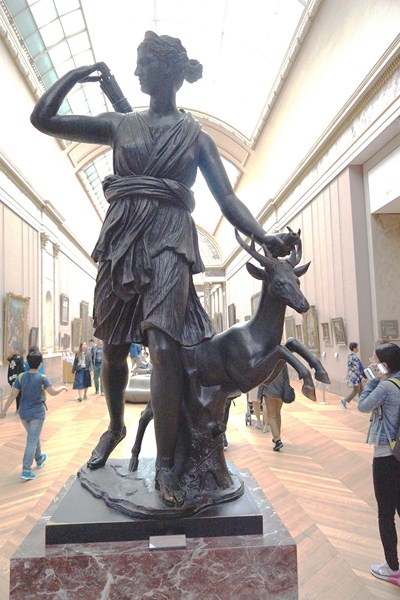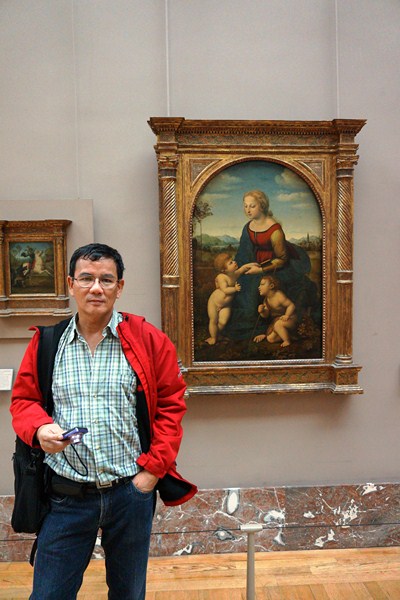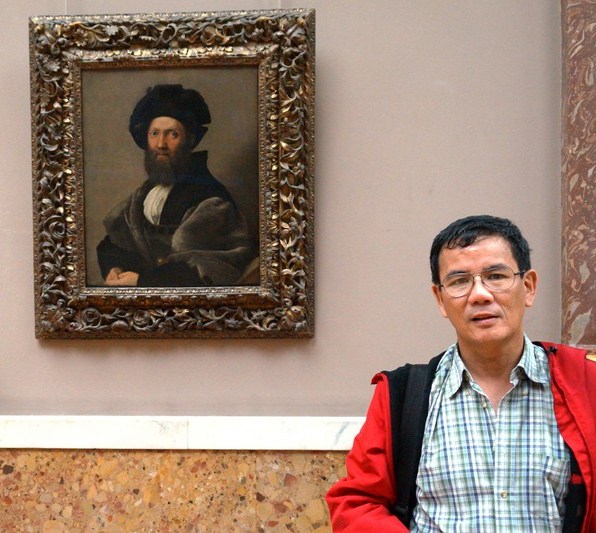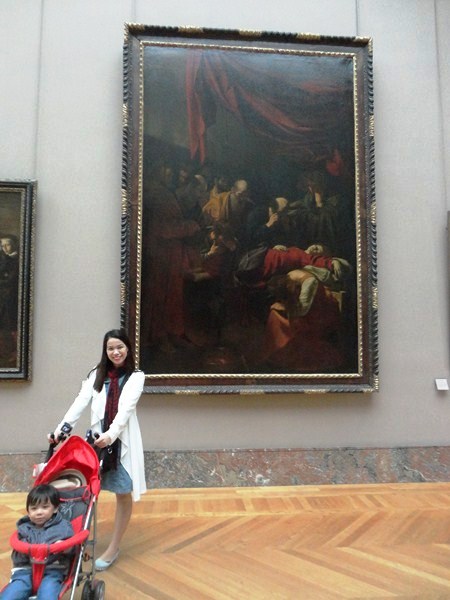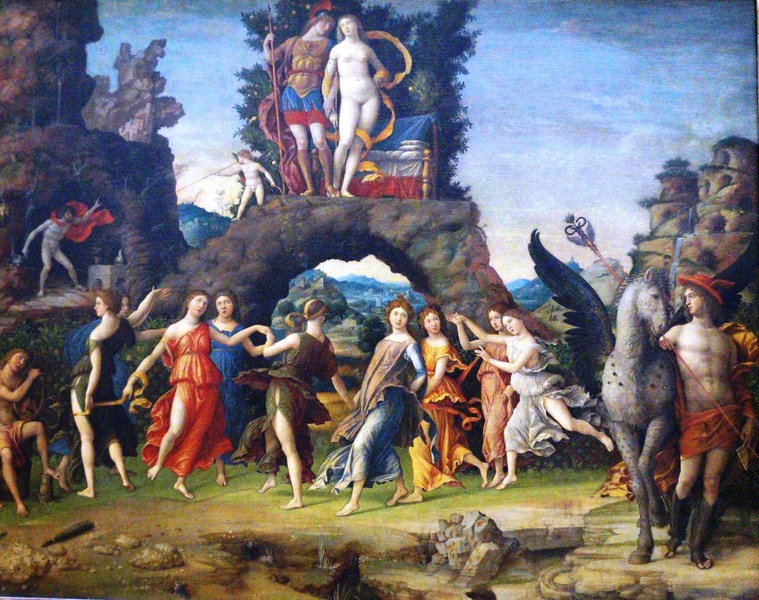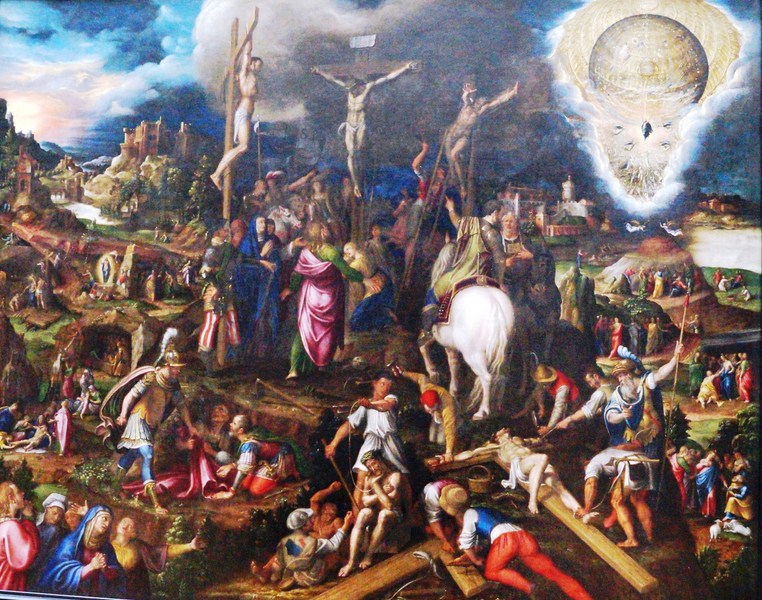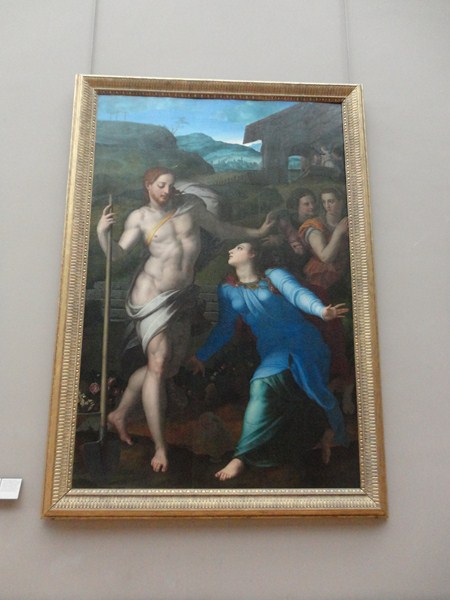After viewing the paintings of Italian and French masters at the Denon Wing, Jandy and I proceeded to the underground level of the Sully Wing to visit the Egyptian Antiquities Department, passing the Winged Victory of Samothrace (190 BC) statue and the excavated and preserved remains of the medieval fortress and moat of the Louvre.
Check out “Louvre Museum“
A numbers of visitors to the Louvre come with the sole aim of visiting this department and it would be a real pity if we did not to spend at least one hour here.
The Egyptian Antiquities collection of the Louvre, the second biggest in the world after the Cairo Museum, comprises over 50,000 pieces, includes artifacts from the Nile civilizations which date from 4,000 BC to the 4th century AD. The collection overviews Egyptian life spanning Ancient Egypt, the Middle Kingdom, the New Kingdom, Coptic art, and the Roman, Ptolemaic, and Byzantine periods.
The department’s origins lie in the royal collection, but it was augmented by Napoleon’s 1798 expeditionary trip with Dominique Vivant, the future director of the Louvre. After Jean-François Champollion translated the Rosetta Stone, Charles X decreed that an Egyptian Antiquities department be created.
Champollion advised the purchase of 7,000 works from the three its continued via acquisitions by Auguste Mariette, founder of the Egyptian Museum in Cairo. Mariette, after excavations at Memphis, sent back crates of archaeological finds including The Seated Scribe.
In 1997, during the Grand Louvre renovation project, this huge collection was distributed on two different floors in what is now called the Sully Wing at the east end of the Louvre.
Guarded by the Great Sphinx of Tanis (c. 2000 BC), this department now fills 30 large rooms. Holdings include art, papyrus scrolls, mummies, tools, clothing, jewelry, games, musical instruments and weapons.
The 19 rooms on the ground floor include two in the basement for particularly heavy exhibits (another reason they are at ground level is that there are pedestrian entrances to the courtyard). As the heaviest objects had to remain on the ground floor, it was impossible to arrange the works by period.
Instead, they are organized into a “thematic circuit” centered on the major aspects of Egyptian civilization (i.e. the daily life in Ancient Egypt), using authentic relics and artworks to illustrate and explain the topics of agriculture, hunting, fishing, animal husbandry, writing, arts and crafts, domestic life, temples, funeral rites and gods in ancient Egypt. The ground floor includes the Temple Room (Room 12) and the Sarcophagus Room (Room 14).
Room 3 has models, found in graves, that show people rowing on the Nile River or poling through shallow water. The models were perhaps intended to provide transportation in the afterlife for the person who had died.
Room 11 contains a row of six of the sphinxes which were set up, in the 4th or 3rd century BC, along the aisle leading to the temple Sérapéum de Saqqara in Egypt. In 1851, these were discovered and excavated out of the sand by workers under the direction of Auguste Mariette.
Later, in 1869, Mariette was asked to suggest a plot for an opera about ancient Egypt, and his idea was accepted as the basis for the opera Aida by Giuseppe Verdi.
The large Temple Room (Room 12), divided into 4 sections, shows the remains of sanctuaries from various sites and all epochs of ancient Egyptian history. It gives us an idea of the structure and function of a temple and the ceremonies that took place there.
After visiting the 12 densely packed rooms of the thematic tour of ancient Egypt, we went down a long staircase (there’s also an elevator for people with restricted mobility) that lead down to the basement.
Here, Room 13 displays the huge, extremely heavy red granite royal tomb of pharaoh Ramses III, who ruled from 1186–1155 BC. This room is also identified as the crypt of the god Osiris.
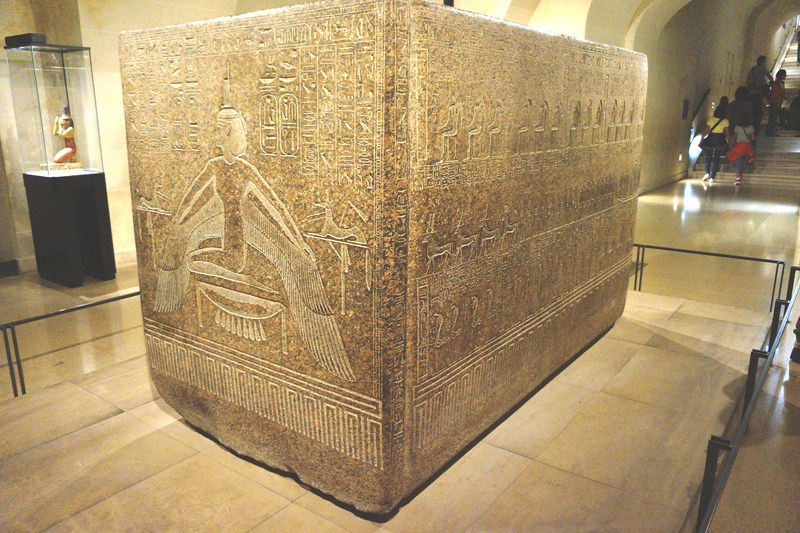
The pink granite cartouche-shaped tomb, at Room 13, once contained the nest of coffins of Pharaoh Ramesses III.
Rooms 18 and 19 have an alphabetical guide to the ancient Egyptian gods, including their appearance, their attributes, their roles, all illustrated with authentic figurines made of metal, ceramics or stone. There is also an exhibit of mummified animals.
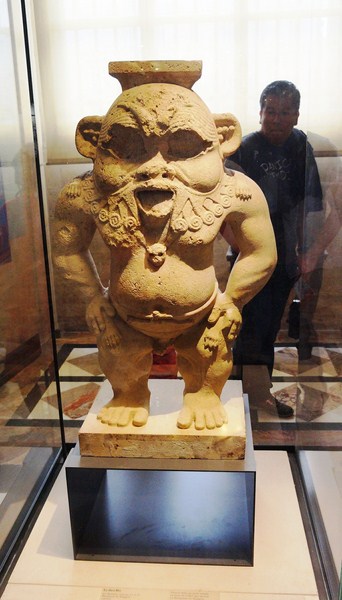
Statue of Bes, god of matrimony, as a misshapen nude dwarf with overly long arms, bowed legs, and a face combining leonine and human features
Rooms 20 to 30, on the first floor, on the other hand, is organized into a “chronological circuit” showing outstanding examples of Egyptian art, from the earliest to the latest periods of ancient Egypt. present a chronological approach, highlighting the different historical periods and the development of Egyptian art from 4000 BC to 400 AD.
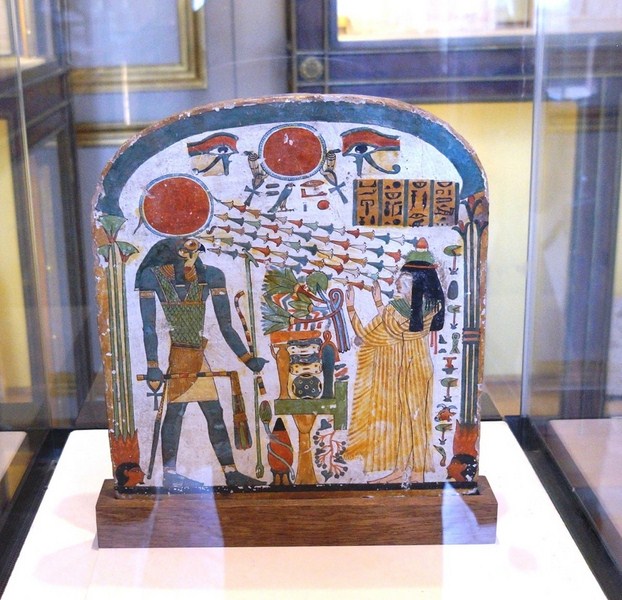
The small wooden stele features an image of Lady Taperet praying to different aspects of the sun: Ra, the sun at its zenith, on one side; and Atum, the setting sun, on the other
Pieces from the ancient period include the Gebel el-Arak Knife from 3400 BC, the Head of King Djedefre and The Seated Scribe, its most famous artifact. Probably the most famous statue in the Egyptian collection of the Louvre, “The Seated Scribe” (c. 2620-2500 BC), in room 22 on the 1st floor, always impresses visitors. Its inlaid eyes are the most striking aspect of this sculpture. Nothing is known about the person portrayed
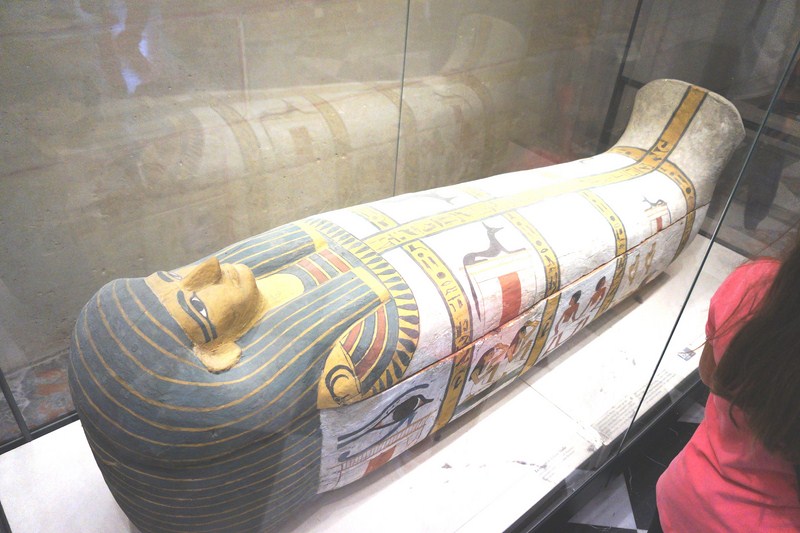
The highly decorated coffin of the Lady of Madja discovered in a cemetery in West Thebes overlooking the valley of Deir el-Medina, behind the hill of Qurnet Mourai
The Middle Kingdom art, known for its gold work and statues, moves from realism to idealization. This is exemplified by the schist statue of Amenemhatankh and the wooden Offering Bearer. The New Kingdom and Coptic Egyptian sections are deep, but the statue of the goddess Nephthys and the limestone depiction of the goddess Hathor demonstrate New Kingdom sentiment and wealth.
In Room 28 (Musee Charles X), the exhibits are about Egyptian Princes and courtiers in the period from 1295–1069 BC. However, its ceiling painting, by Horace Vernet (1789-1863), shows something completely different -Pope Julius II ordering Bramante, Michelangelo, and Raphael to build the Vatican and Saint Peter’s in Rome.
Check out “Charles X Museum“
In Room 29 (Musee Charles X), the exhibits are about the Third Middle Period of ancient Egypt, from about 1069–404 BC. Here the ceiling painting, L’Egypte sauvée par Joseph (Egypt saved by Joseph) by Alexandre-Denis Abel de Pujol (1785-1861), has to do with Egypt.
Louvre Museum: 75001 Paris, France. Tel: +33 1 40 20 50 50. Open daily, except Tuesdays and holidays, 9 AM- 6 PM (until 10 PM on Wednesday and Friday evenings).
The Louvre has three entrances: the main entrance at the pyramid, an entrance from the Carrousel du Louvre underground shopping mall, and an entrance at the Porte des Lions (near the western end of the Denon wing).
Admission is free, from October to March, on the first Sunday of every month. Still and video photography is permitted for private, noncommercial use only in the galleries housing the permanent collection.The use of flash or other means of artificial lighting is prohibited. Photography and filming are not permitted in the temporary exhibition galleries.
How To Get There: the Louvre can be reached via Metro lines 1 and 7, station Palais Royal – Musée du Louvre Métro or the Louvre-Rivoli stations. By bus, take No. 21, 24, 27, 39, 48, 68, 69, 72, 81, 95 as well as the touristic Paris l’Open Tour. By car, there is an underground parking reachable by Avenue du Général Lemonier, every day from 7 AM – 11 PM.

